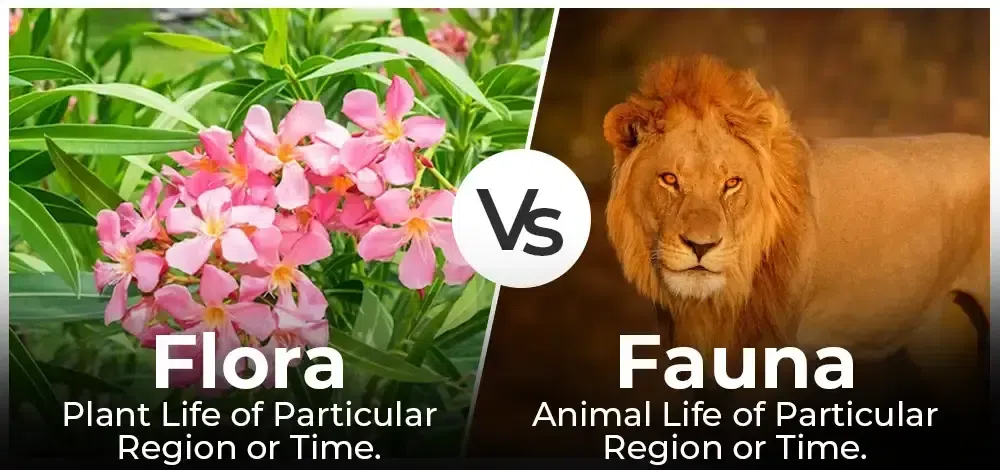Flora And Fauna
flora and fauna by Delta publications
key notes:

Definition
- Flora refers to the collective plants or plant life of a particular region or time. It includes trees, shrubs, grasses, and other types of vegetation.
- Fauna refers to the animals or animal life of a particular region or time. It includes mammals, birds, insects, reptiles, and marine life.
Importance of Flora and Fauna
- Flora provides oxygen, food, shelter, and raw materials for humans and other organisms.
- Fauna plays a crucial role in maintaining the balance of ecosystems. They contribute to pollination, seed dispersal, and maintaining food chains.
Biodiversity
- Biodiversity is the variety of different species of flora and fauna in an area. It is essential for ecosystem stability.
- It is important to preserve both flora and fauna to maintain the health of the planet.
Types of Flora and Fauna
- Flora: Can be categorized into trees, shrubs, herbs, grasses, mosses, ferns, and flowering plants.
- Fauna: Includes both terrestrial fauna (living on land) and aquatic fauna (living in water). Terrestrial fauna includes mammals like tigers, deer, and elephants, while aquatic fauna includes fishes, whales, and jellyfish.
Adaptations
Both flora and fauna have developed unique adaptations to survive in their specific environments.
- Flora: Plants have adapted to varying conditions such as extreme heat, cold, or drought (e.g., cactus in deserts).
- Fauna: Animals have adaptations like fur for warmth (polar bears), camouflage (chameleons), or webbed feet for swimming (ducks).
Conservation
- Protecting the flora and fauna is important to prevent species from becoming extinct.
- Conservation efforts include creating wildlife reserves, national parks, and taking action against illegal poaching and deforestation.
Human Impact
- Human activities, like deforestation, urbanization, and pollution, can harm both flora and fauna.
- Climate change also affects the distribution and survival of many species.
Examples of Flora and Fauna
- Flora: Oak trees, tulips, ferns, wheat, and rice.
- Fauna: Lions, elephants, dolphins, birds, insects, and amphibians like frogs.
Ecological Role
- Flora helps in oxygen production and carbon dioxide absorption.
- Fauna helps in pollination (e.g., bees), seed dispersal, and controlling pests.
Let’s practice!

